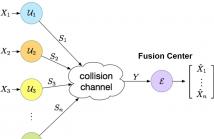
ICASSP is the world’s largest and most comprehensive technical conference focused on signal processing and its applications. The ICASSP 2020 conference will feature world-class presentations by internationally renowned speakers, cutting-edge session topics and provide a fantastic opportunity to network with like-minded professionals from around the world. Visit website.

- Read more about Extended Object Tracking using Hierarchical Truncation Measurement Model with Automotive Radar
- 1 comment
- Log in to post comments
Motivated by real-world automotive radar measurements that are distributed around object (e.g., vehicles) edges with a certain volume, a novel hierarchical truncated Gaussian measurement model is proposed to resemble the underlying spatial distribution of radar measurements. With the proposed measurement model, a modified random matrix-based extended object tracking algorithm is developed to estimate both kinematic and extent states. In particular, a new state update step and an online bound estimation step are proposed with the introduction of pseudo measurements.
- Categories:
 41 Views
41 Views
- Read more about Transfer Learning from Youtube Soundtracks to Tag Arctic Ecoacoustic Recordings
- Log in to post comments
- Categories:
 111 Views
111 Views
- Read more about A LEARNING APPROACH TO COOPERATIVE COMMUNICATION SYSTEM DESIGN
- Log in to post comments
The cooperative relay network is a type of multi-terminal communication system. We present in this paper a Neural Network (NN)-based autoencoder (AE) approach to optimize its design. This approach implements a classical three-node cooperative system as one AE model, and uses a two-stage scheme to train this model and minimize the designed losses. We demonstrate that this approach shows performance close to the best baseline in decode-and-forward (DF), and outperforms the best baseline in amplify-and-forward (AF), over a wide range of signal-to-noise-ratio (SNR) values.
- Categories:
 27 Views
27 Views
- Read more about Spectrogram Analysis Via Self-Attention for Realizing Cross-Model Visual-Audio Generation
- Log in to post comments
Human cognition is supported by the combination of multi- modal information from different sources of perception. The two most important modalities are visual and audio. Cross- modal visual-audio generation enables the synthesis of da- ta from one modality following the acquisition of data from another. This brings about the full experience that can only be achieved through the combination of the two. In this pa- per, the Self-Attention mechanism is applied to cross-modal visual-audio generation for the first time.
SA-CMGAN poster.pdf
- Categories:
 55 Views
55 Views
- Read more about EXPOSURE INTERPOLATION VIA HYBRID LEARNING
- Log in to post comments
Deep learning based methods have become dominant solutions to many image processing problems. A natural question would be “Is there any space for conventional methods on these problems?” In this paper, exposure interpolation is taken as an example to answer this question and the answer is “Yes”. A new hybrid learning framework is introduced to interpolate a medium exposure image for two large-exposure-ratio images from an emerging high dynamic range (HDR) video capturing device. The framework is set up by fusing conventional and deep learning methods.
- Categories:
 38 Views
38 Views
- Read more about Defense against adversarial attacks on spoofing countermeasures of ASV
- 1 comment
- Log in to post comments
Various spearheads countermeasure methods for automatic speaker verification (ASV) with considerable performance for anti-spoofing are proposed in ASVspoof 2019 challenge. However, previous work has shown that countermeasure models are subject to adversarial examples indistinguishable from natural data. A good countermeasure model should not only be robust to spoofing audio, including synthetic, converted, and replayed audios, but counter deliberately generated examples by malicious adversaries.
- Categories:
 44 Views
44 Views
- Read more about An optimal symmetric threshold strategy for remote estimation over the collision channel
- Log in to post comments
A wireless sensing system with n sensors, observing independent and identically distributed continuous random variables with a symmetric probability density function, and one non-collocated estimator acting as a fusion center is considered. The sensors transmit information to the fusion center via a limited capacity communication medium modeled by a collision channel. It is assumed that there is no communication among the sensors prior to transmission, and the collision channel allows at most k<n simultaneous transmissions.
- Categories:
 22 Views
22 Views
- Read more about Residual Attention Network for Wavelet Domain Super-Resolution
- 1 comment
- Log in to post comments
- Categories:
 18 Views
18 Views
- Read more about [Slide] MOGA: Searching Beyond MobileNetV3
- Log in to post comments
- Categories:
 14 Views
14 Views